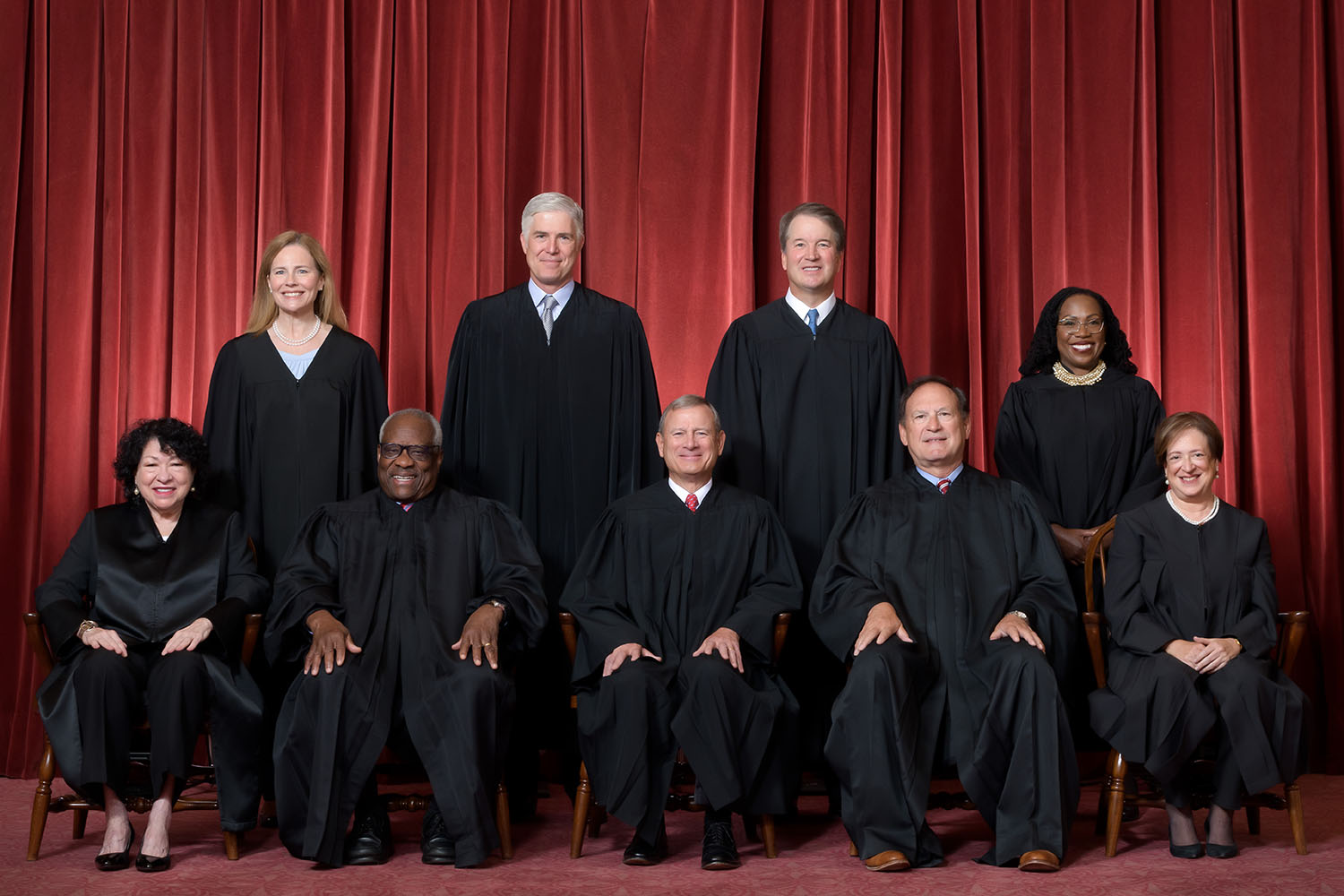State of New York v. Donald J. Trump
A hearing was held on Friday. I expect the judge to issue an order regarding the Preliminary Injunction on Monday.
The TRO expired on Friday, so the judge will either issue an order regarding the case. If she is going to go rogue, she will want to have that done on Monday to stop the President from doing his duty. If she wants to respect the constitution, she will issue an order denying the preliminary injunction.
In my businesses, I sometimes had a bookkeeper. She would receive the bills, make entries in the books, then bring me checks to sign to pay those bills.
I could also tell her to issue a check to somebody or some business. It was never her job to tell me not to pay that person, nor to verify if that entity was supposed to get the money. It was my job to make sure that when I told her to pay an entity, that entity should be paid, and how much.
She was supposed to tell me “no”, only if it would run afoul of the law or if we didn’t have the cash for it. If it meant we would be short later, she still did it.
The Bureau of Fiscal Service (BFS) is that bookkeeper for the Federal Government. They are tasked with making payments. They are not tasked with verifying that the payment should be made.
The decision to make a payment comes from other entities within the bureaucracy.
—State of New York v. Donald J. Trump, No. 1:25-cv-01144, slip op. at 6 (S.D.N.Y.)
These payment files are checked against a list of “don’t pay”. If the recipient of the payment is on any of those lists, the payment is held. The agency that sent the payment file is responsible for determining if the payment is proper.
In the best of worlds, this would mean that no payments went to bad actors.
Now consider the case of the President issuing an Executive Order stopping payments to purple people eaters. There are dozens of agencies that send money to purple people eaters. All of those agencies are responsible for stopping payment files from going through to pay purple people eaters.
The BFS receives a payment file to send a payment to a PPE. If that PPE is not on the do not pay list, they will send the payment to that PPE. If the PPE is on a no pay list, the payment is held and the agency is informed.
If that agency sends back “pay it”, the BFS pays it. And the PPE gets money, regardless of what the President ordered.
When the bureaucracy is working with the President, every agency would have heard the “stop payments to PPEs” and would have done so. Any payment files that were already sent might be called back or stopped. If the BFS flags a payment as going to a PPE, everybody says “good job”.
If the bureaucracy is at odds with the President, they ignore the EO and do whatever the hell they want. If BFS flags any payments, they just order them paid.
If some agencies are attempting to obey the President, there can still be others that are not.
Worse, in many cases, contracts are let and budgeted. Some low level GS-2 with TDS can order a payment on a contract they control, and it just gets paid. Even if all of his bosses have told him “no”.
The President has ordered that no more payments to PPEs be made. To make this happen, he can either send people who are willing to obey him to every agency and every desk where somebody can send a payment to a PPE.
Or, he can send a few people to the BFS, and they can analyze each payment file as it comes in, check to see if it is a PPE payment.
Watching the bookkeepers doesn’t mean that the bookkeepers are doing something “wrong”, it is just the proper chock point in the flow of money.
The argument being made by these former treasury officials is that “career officials” are non-partisan and can be trusted to do the right thing.
For decades, BFS has been staffed by nonpartisan career employees led by nonpartisan career official…
There appears to be a claim without evidence that these workers are nonpartisan. At least they left off the “nonpartisan” when describing the fiscal assistant secretary, their boss.
They claim that all these nonpartisan career employees have undergone a security screening. Screening is one of those weasel words we see people use when they want the reader to think one thing when it isn’t true.
When I purchase a firearm, I fill out a 4473 and a “background check” is performed. This is a type of “security screening”. Having undergone a “thorough security screening” does not mean that this person has a clearance. If they had clearances, the brief would have said they have clearances.
This is intended to make it seem that the DOGE team’s actual clearances are not as thorough or complete as the BFS security screening. The reality is that any real clearance is likely better than the screenings these people got.
There is more, I’ll leave you with Grok’s explanation, it isn’t bad.
-
Parties Involved: The State of New York and others are the plaintiffs, suing Donald J. Trump, in his official capacity as President, and others as defendants.
-
Context: The case revolves around actions by the Department of Government Efficiency (DOGE), led by Elon Musk, which has been granted access to the Bureau of Fiscal Services (BFS) payment systems within the U.S. Department of Treasury. This access is controversial and forms the basis of the legal challenge.
-
Interest: The brief is submitted by former Treasury officials who have extensive experience with the BFS payment systems. They argue that their expertise provides valuable insight into the potential risks of the situation.
-
Purpose: Their brief supports the plaintiffs’ request for a preliminary injunction, which is a court order to stop an action temporarily until the case is decided.
-
Background: The brief outlines how DOGE, under Musk’s leadership, sought access to BFS systems, which manage federal payments, after resistance from career Treasury officials. This access was purportedly to cut federal spending by stopping certain payments.
-
Concerns: The amici express significant concerns regarding:
-
Political Interference: The risk of politically motivated decisions to withhold payments to entities or individuals based on policy disagreements.
-
Cybersecurity and Privacy: The potential for breaches involving sensitive personal and financial data.
-
Operational Risks: The danger of disrupting the payment system, which could delay or halt critical payments like Social Security.
-
-
Functions: BFS is responsible for disbursing federal payments, processing about 1.3 billion transactions annually, and managing sensitive information like Social Security Numbers and bank details.
-
Process: Agencies certify payment files which BFS then processes, ensuring funds go to the right recipients without determining eligibility, which is the agencies’ role.
-
Illegal Withholding: DOGE could illegally block payments based on political motives, bypassing the usual checks by career civil servants.
-
Data Security: Access by DOGE personnel could compromise sensitive data, leading to privacy issues or misuse of information for competitive advantage.
-
Operational Security: There’s a risk of system vulnerabilities due to inadequate vetting or training of DOGE personnel, increasing chances of cyber threats.
-
System Integrity: Even without malicious intent, changes or interference could disrupt the timely processing of payments, impacting trust and reliability.
-
Ineffectiveness: Even limited access could enable DOGE to influence payment decisions through existing personnel, posing similar risks as full access.
-
The amici argue that the access granted to DOGE officials poses significant risks to the integrity of federal payment systems, advocating for the court to grant the plaintiffs’ motion for a preliminary injunction to prevent further access or misuse.
-
Legal Implications: The brief highlights potential violations of law, like illegal impoundment, where funds are withheld contrary to congressional intent.
-
Historical Context: It underscores the traditional non-political management of BFS by career officials, contrasting this with the current political oversight.
-
Public Trust: The integrity of payment systems is crucial for public trust and the functioning of government programs.
— Grok








